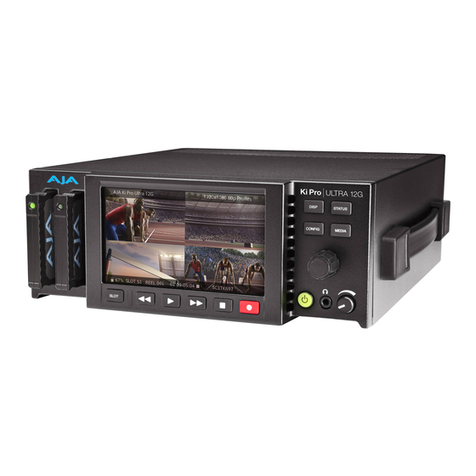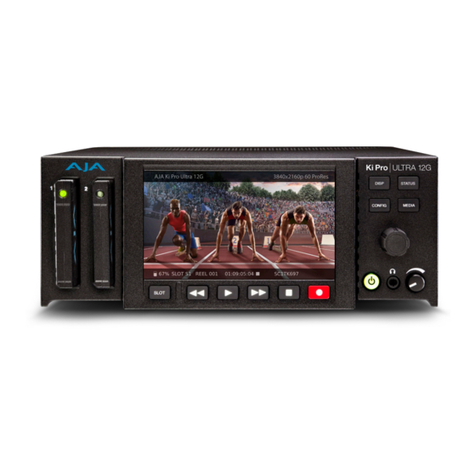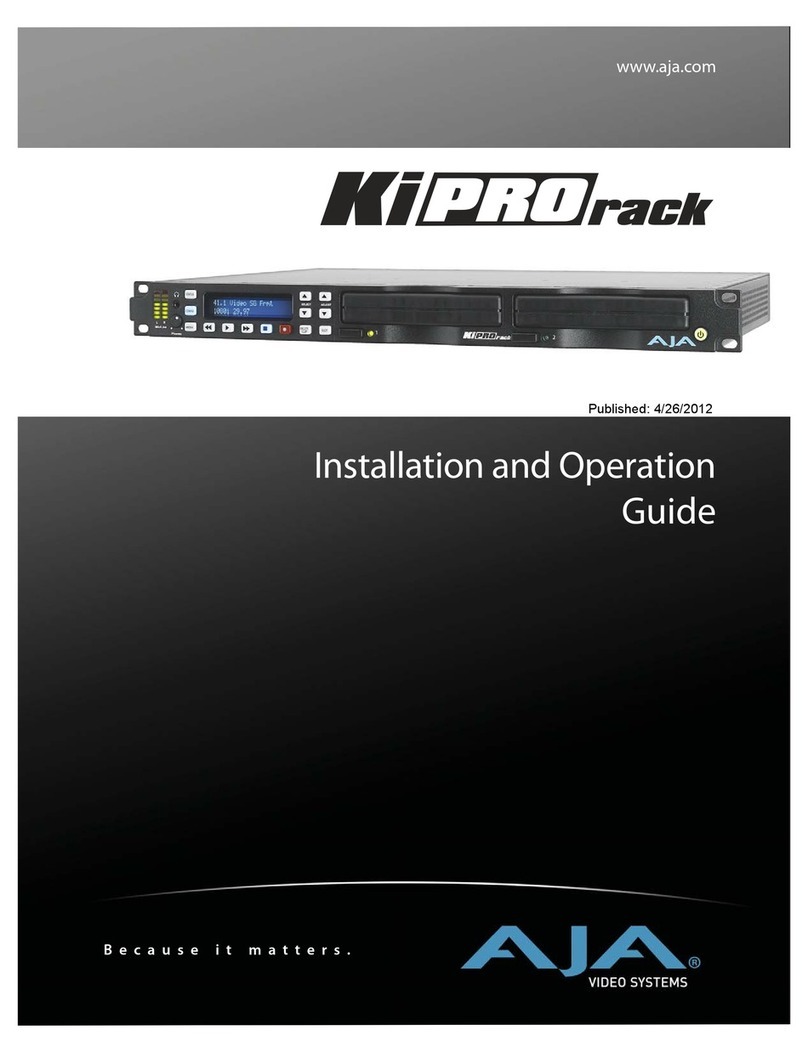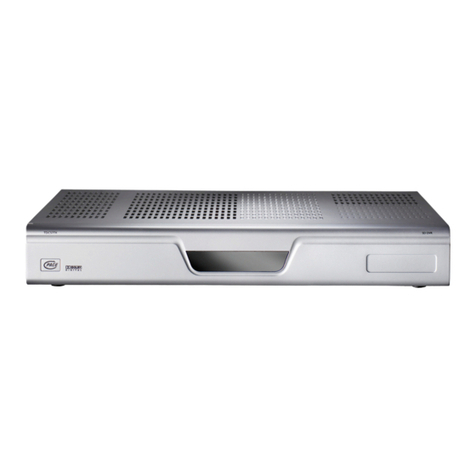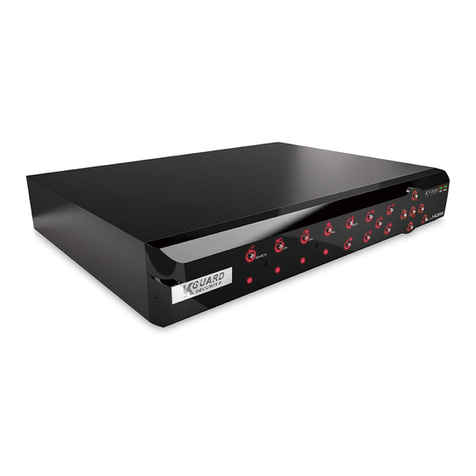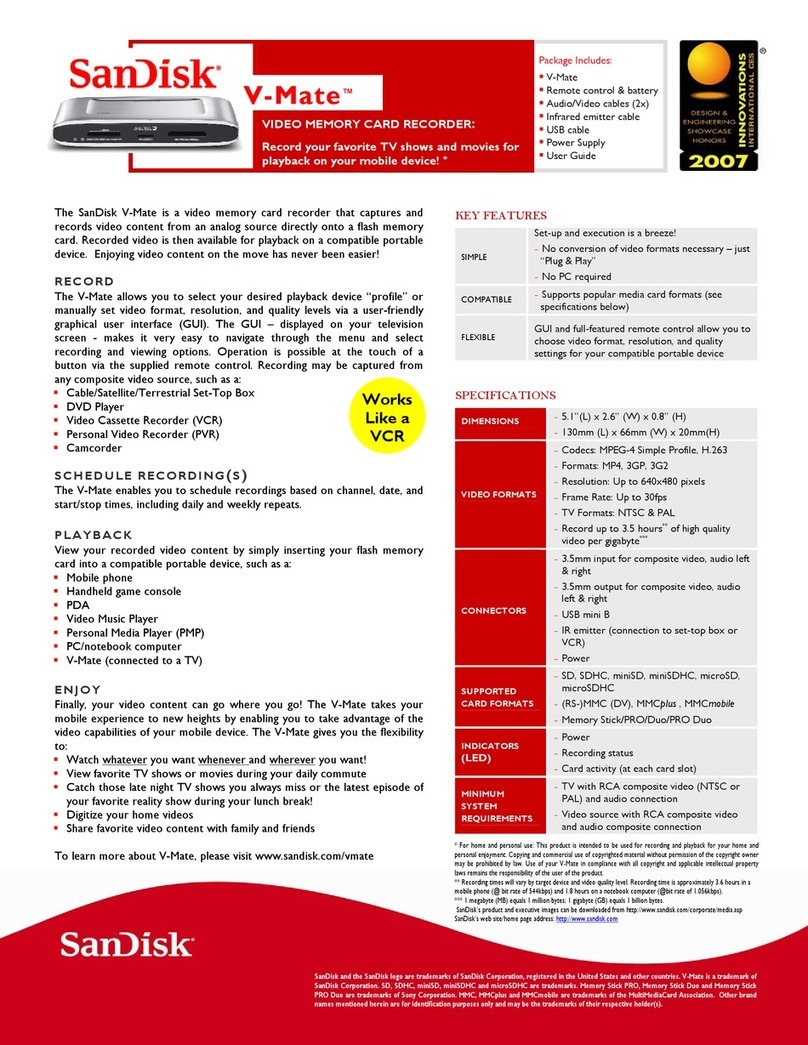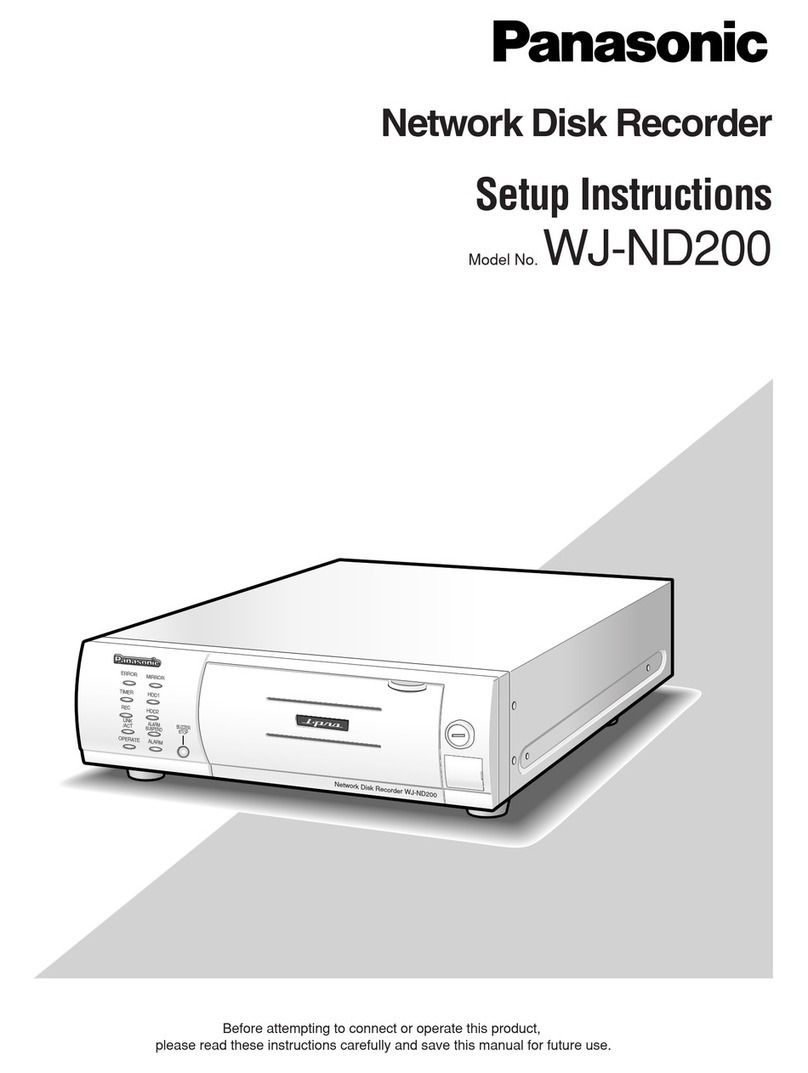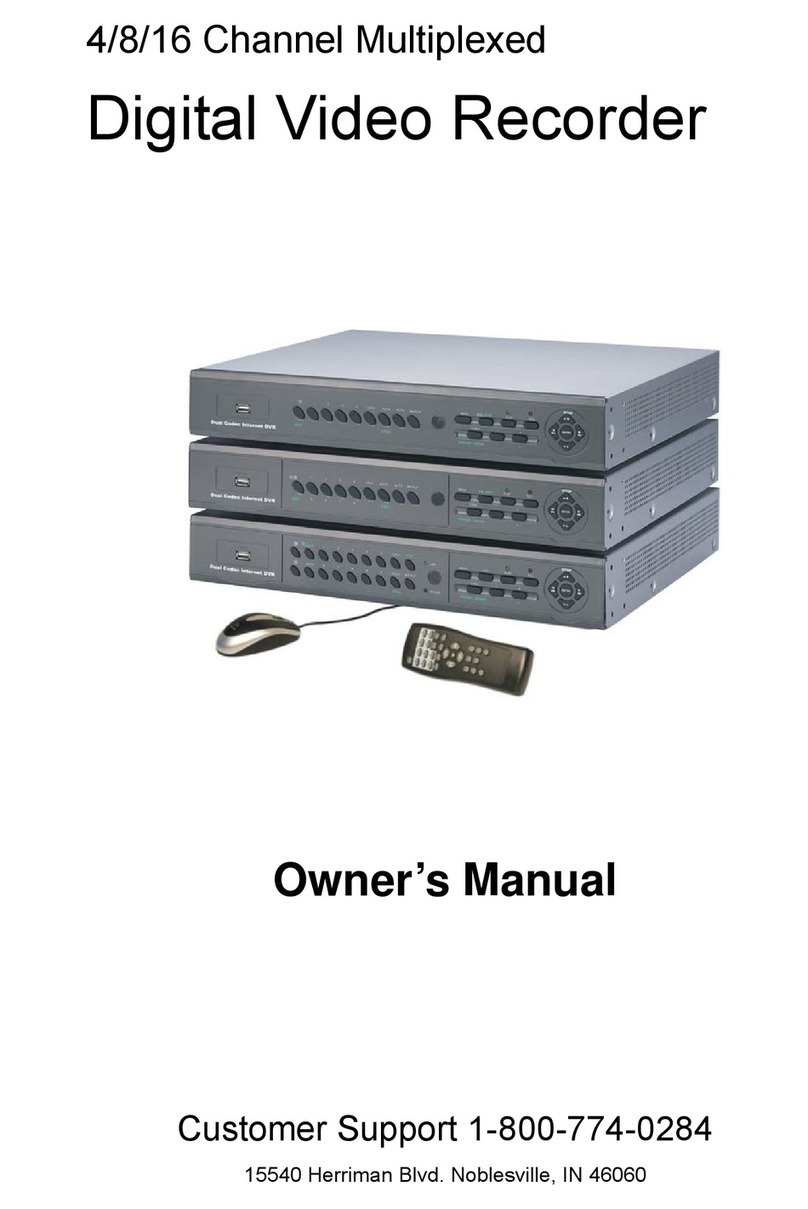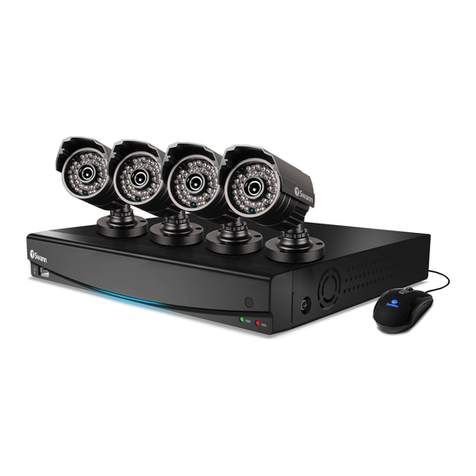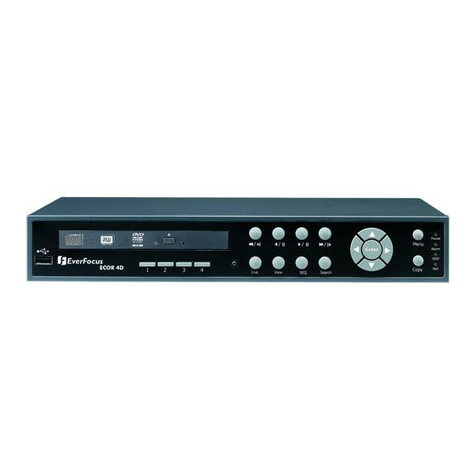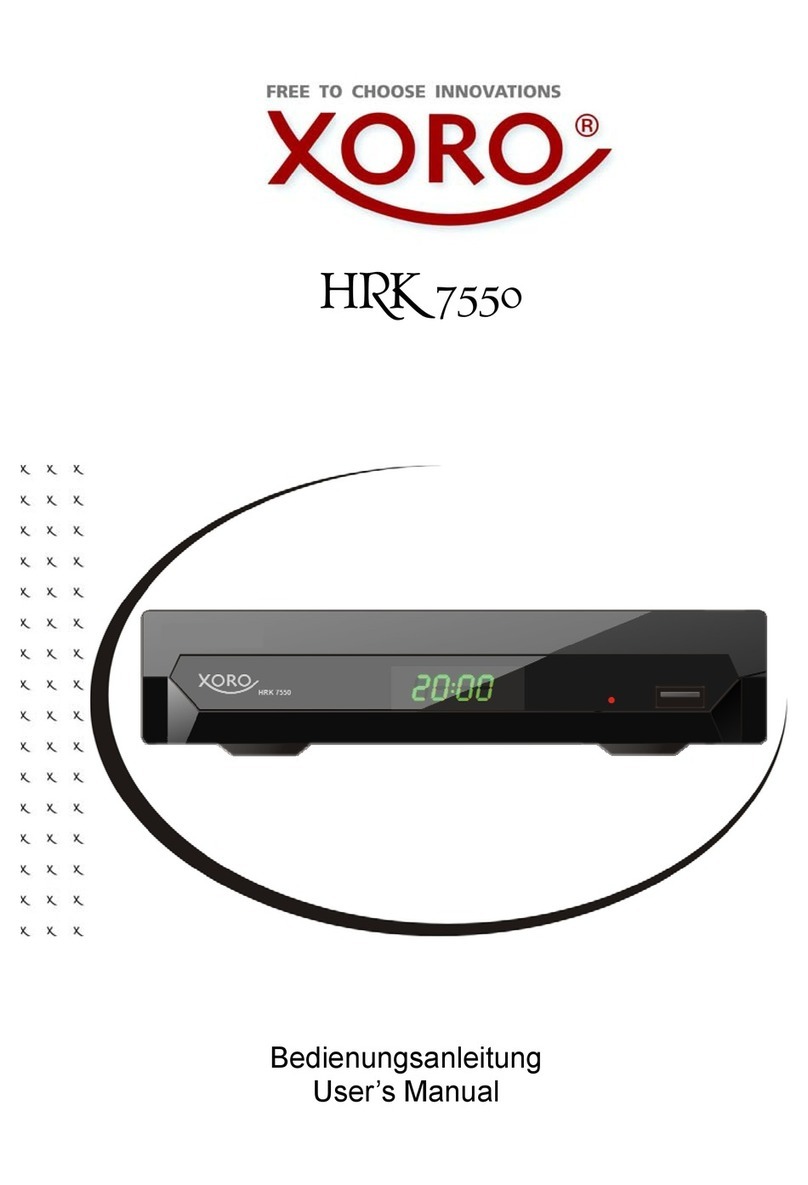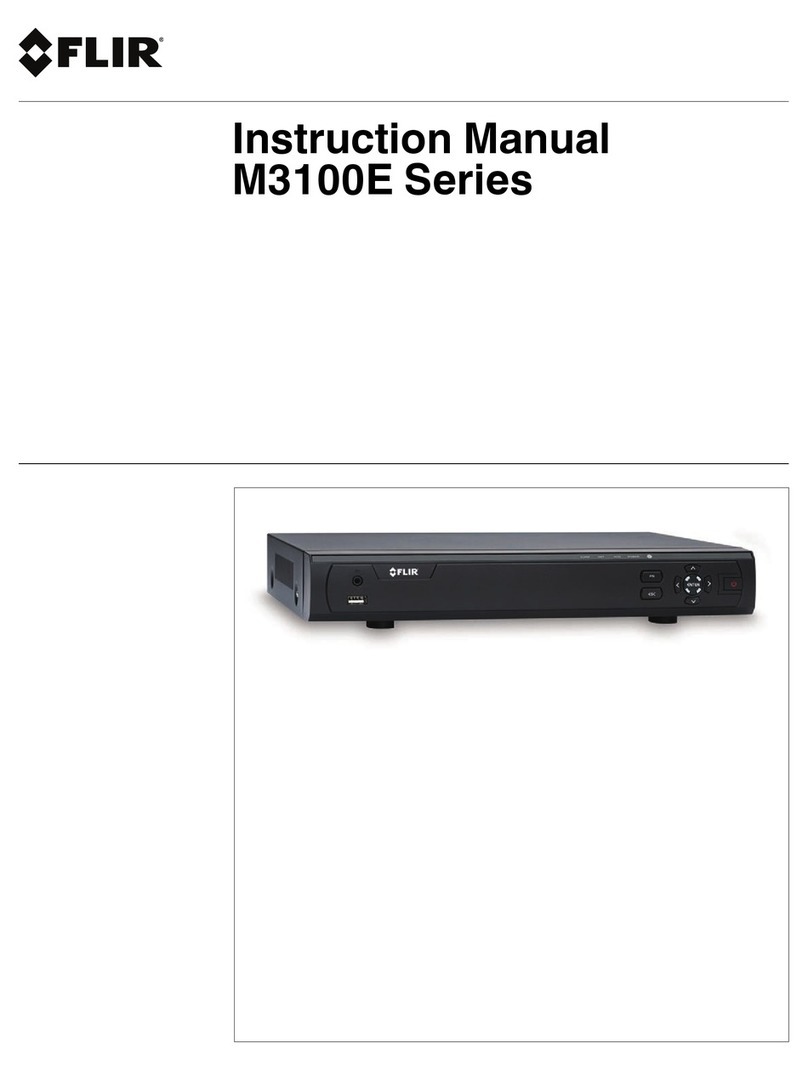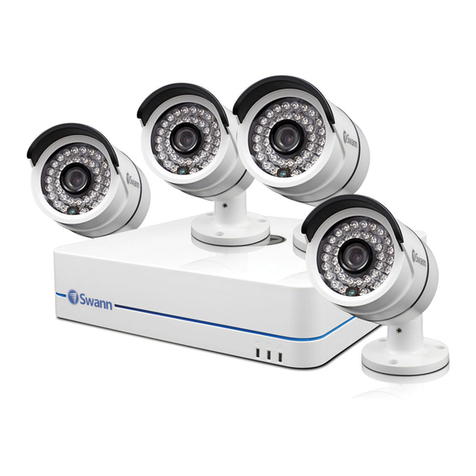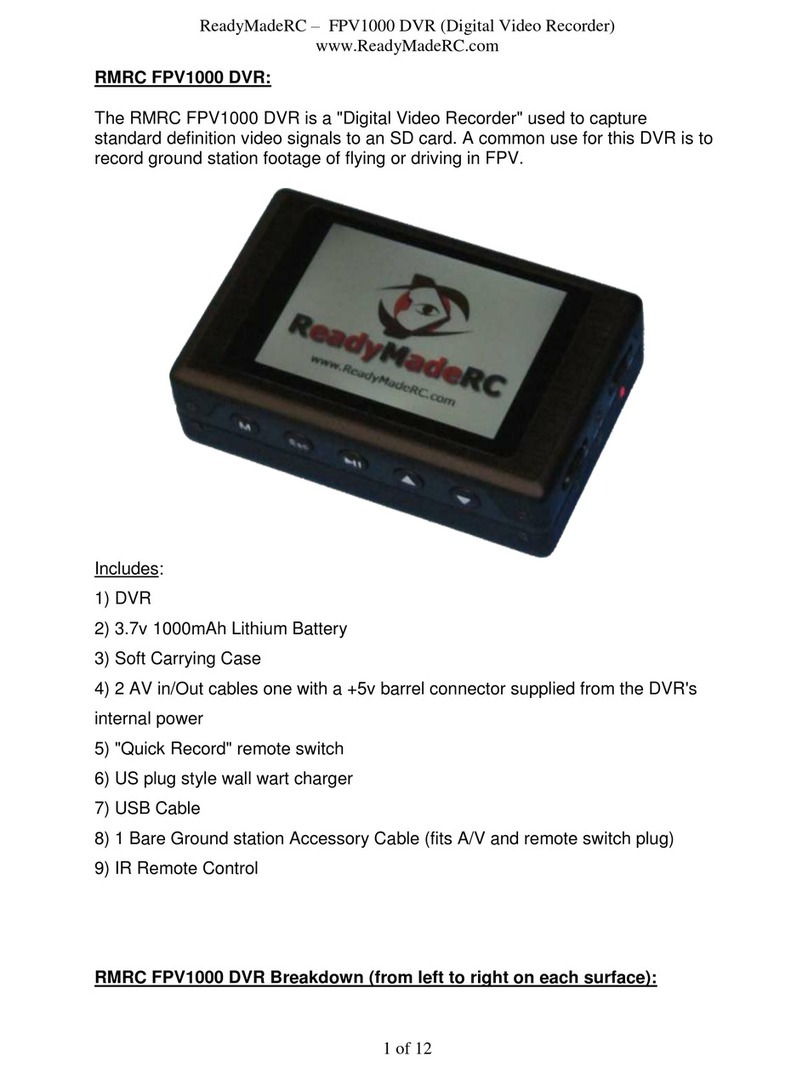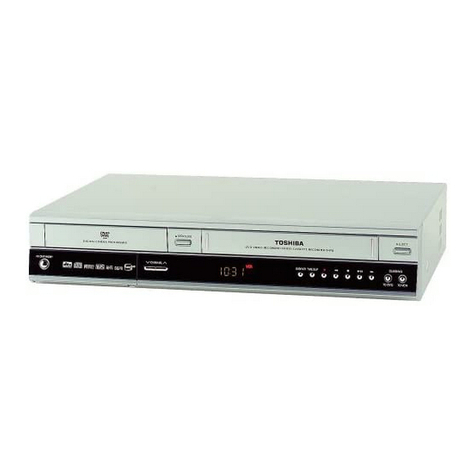
Ki Pro Ultra Products Machine Control Guide v3.0 4 www.aja.com
2.44 In Reset – 0x40 0x20 . . . . . . . . . . . . . . . . . . . . . . . . . . . . . . . . 14
2.45 Out Reset – 0x40 0x21. . . . . . . . . . . . . . . . . . . . . . . . . . . . . . . 14
2.46 A In Reset – 0x40 0x22 . . . . . . . . . . . . . . . . . . . . . . . . . . . . . . 14
2.47 A Out Reset – 0x40 0x23 . . . . . . . . . . . . . . . . . . . . . . . . . . . . . 14
2.48 Edit Preset – 0x44 0x30 . . . . . . . . . . . . . . . . . . . . . . . . . . . . . . 14
2.49 Head Select – 0x40 0x34 . . . . . . . . . . . . . . . . . . . . . . . . . . . . . 15
2.50 Clip ID Sense – 0x60 0xE0 . . . . . . . . . . . . . . . . . . . . . . . . . . . . 15
2.51 In Data Sense – 0x60 0x10 . . . . . . . . . . . . . . . . . . . . . . . . . . . . 15
2.52 Out Data Sense – 0x60 0x11 . . . . . . . . . . . . . . . . . . . . . . . . . . . 15
2.53 A In Data Sense – 0x60 0x12 . . . . . . . . . . . . . . . . . . . . . . . . . . . 15
2.54 A Out Data Sense – 0x60 0x13. . . . . . . . . . . . . . . . . . . . . . . . . . 15
2.55 Command Speed Sense – 0x60 0x2E . . . . . . . . . . . . . . . . . . . . . 15
2.56 PreRoll Time Sense – 0x60 0x31 . . . . . . . . . . . . . . . . . . . . . . . . 15
2.57 Timer Mode Sense – 0x60 0x36 . . . . . . . . . . . . . . . . . . . . . . . . . 16
2.59 Current Time Sense – 0x61 0x0C . . . . . . . . . . . . . . . . . . . . . . . . 16
2.60 Status Sense – 0x61 0x20 . . . . . . . . . . . . . . . . . . . . . . . . . . . . . 16
2.61 Error Code Sense – 0xF0 0xEE . . . . . . . . . . . . . . . . . . . . . . . . . . 16
Chapter 3 – Status Data . . . . . . . . . . . . . . . . . . . . . . . . . . . 17
3.0 Status Overview . . . . . . . . . . . . . . . . . . . . . . . . . . . . . . . . . . . . . 17
3.1 Local – Status Data Byte 0, Bit 0. . . . . . . . . . . . . . . . . . . . . . . . . . 17
3.2 Play – Status Data Byte 1, Bit 0 . . . . . . . . . . . . . . . . . . . . . . . . . . 17
3.3 Record – Status Data Byte 1, Bit 1 . . . . . . . . . . . . . . . . . . . . . . . . 17
3.4 Fast Fwd – Status Data Byte 1, Bit 2 . . . . . . . . . . . . . . . . . . . . . . . 18
3.5 Rewind – Status Data Byte 1, Bit 3 . . . . . . . . . . . . . . . . . . . . . . . . 18
3.6 Eject – Status Data Byte 1, Bit 4 . . . . . . . . . . . . . . . . . . . . . . . . . . 18
3.7 Stop – Status Data Byte 1, Bit 5 . . . . . . . . . . . . . . . . . . . . . . . . . . 18
3.8 Tension Release – Status Data Byte 1, Bit 6. . . . . . . . . . . . . . . . . . . 18
3.9 Standby – Status Data Byte 1, Bit 7. . . . . . . . . . . . . . . . . . . . . . . . 18
3.10 Cue Ok – Status Data Byte 2, Bit 0. . . . . . . . . . . . . . . . . . . . . . . . 18
3.11 Still – Status Data Byte 2, Bit 1 . . . . . . . . . . . . . . . . . . . . . . . . . . 18
3.12 Reverse – Status Data Byte 2, Bit 2 . . . . . . . . . . . . . . . . . . . . . . . 18
3.13 Var – Status Data Byte 2, Bit 3 . . . . . . . . . . . . . . . . . . . . . . . . . . 18
3.14 Jog – Status Data Byte 2, Bit 4 . . . . . . . . . . . . . . . . . . . . . . . . . . 18
3.15 Shuttle – Status Data Byte 2, Bit 5. . . . . . . . . . . . . . . . . . . . . . . . 19
3.16 Servo Lock – Status Data Byte 2, Bit 7 . . . . . . . . . . . . . . . . . . . . . 19
3.17 In Set - Status Data Byte 3, Bit 0 . . . . . . . . . . . . . . . . . . . . . . . . . 19
3.18 Out Set – Status Data Byte 3, Bit 1 . . . . . . . . . . . . . . . . . . . . . . . 19
3.19 Audio In Set – Status Data Byte 3, Bit 2 . . . . . . . . . . . . . . . . . . . . 19
3.20 Audio Out Set – Status Data Byte 3, Bit 3 . . . . . . . . . . . . . . . . . . . 19
3.21 Cue Up Complete – Status Data Byte 4, Bit 0. . . . . . . . . . . . . . . . . 19
3.22 Auto Edit – Status Data Byte 4, Bit 2 . . . . . . . . . . . . . . . . . . . . . . 19
3.23 Edit – Status Data Byte 4, Bit 4. . . . . . . . . . . . . . . . . . . . . . . . . . 19
3.24 Full EE – Status Data Byte 4, Bit 6 . . . . . . . . . . . . . . . . . . . . . . . . 19
3.25 Selected EE – Status Data Byte 4, Bit 7 . . . . . . . . . . . . . . . . . . . . 20
3.26 Edit Preset A1 – Status Data Byte 5, Bit 0 . . . . . . . . . . . . . . . . . . . 20
3.27 Edit Preset A2 – Status Data Byte 5, Bit 1 . . . . . . . . . . . . . . . . . . . 20
3.28 Edit Preset LTC – Status Data Byte 5, Bit 2 . . . . . . . . . . . . . . . . . . 20
3.29 Edit Preset Video – Status Data Byte 5, Bit 4 . . . . . . . . . . . . . . . . . 20
3.30 Edit Preset Assemble – Status Data Byte 5, Bit 5 . . . . . . . . . . . . . . 20
3.31 Edit Preset Insert – Status Data Byte 5, Bit 6 . . . . . . . . . . . . . . . . . 20
3.32 Reverse Lamp – Status Data Byte 6, Bit 4 . . . . . . . . . . . . . . . . . . . 20
3.33 Forward Lamp – Status Data Byte 6, Bit 5 . . . . . . . . . . . . . . . . . . 20
3.34 Still Lamp – Status Data Byte 6, Bit 6. . . . . . . . . . . . . . . . . . . . . . 20
3.35 Color Frame Lock – Status Data Byte 8, Bit 3. . . . . . . . . . . . . . . . . 21
3.36 Deterministic Play Armed – Status Data Byte 10, Bit 0. . . . . . . . . . . 21
3.37 Deterministic Play Ready – Status Data Byte 10, Bit 1 . . . . . . . . . . . 21
3.38 DA1 – Status Data Byte 12, Bit 0 . . . . . . . . . . . . . . . . . . . . . . . . . 21
3.39 DA2 – Status Data Byte 12, Bit 1. . . . . . . . . . . . . . . . . . . . . . . . . 21
3.40 DA3 – Status Data Byte 12, Bit 2. . . . . . . . . . . . . . . . . . . . . . . . . 21
3.41 DA4 – Status Data Byte 12, Bit 3 . . . . . . . . . . . . . . . . . . . . . . . . . 21




